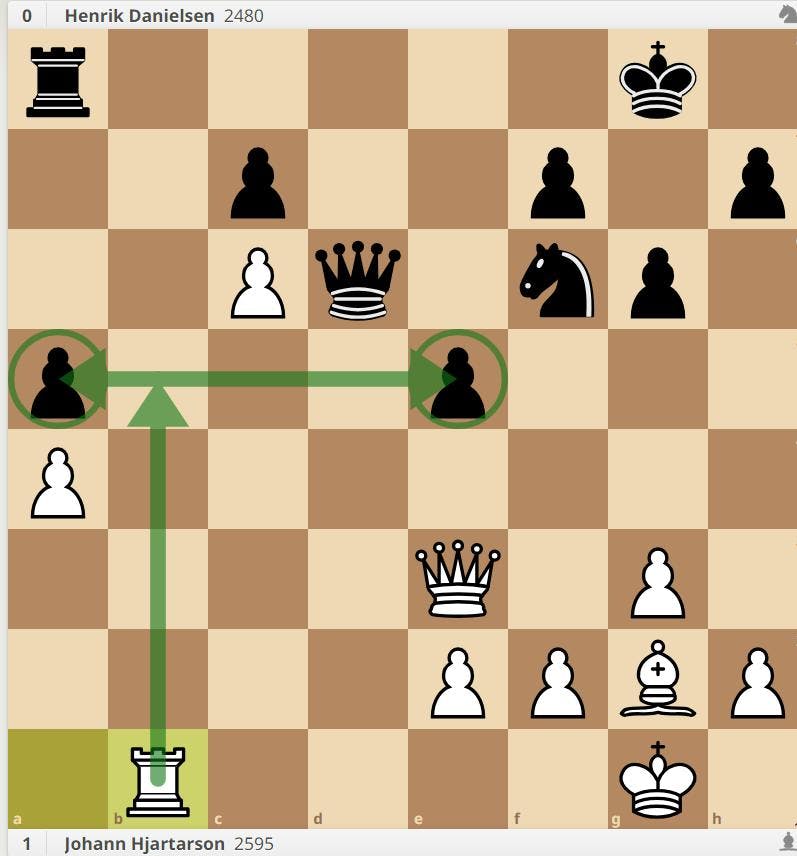
1. a5 and e5 are both weak

2. A different kind of two weaknesses
A phenomenon usually associated with the endgame, the principle of two weaknesses also has significance in the middlegame.
One weakness can be effectively protected. Two weaknesses is often fatal. When one side has inflicted a weakness on their opponent, and restricted them to defending it, victory is achieved by inflicting a further weakness elsewhere in the defender's position - ideally as far from the original weakness as possible. The defender is then overstretched defending both weaknesses.
In position 1 (Hjartarson - Danielsen, 1994), white has given black two weak pawns on a5 and e5. Should black wish to alleviate the pain of having to defend both from an eventual Rb5, he must push his e-pawn to e4, where it will still be weak.
A note of caution: 'Weakness' here is not, as per the definition in this glossary, limited to pawns and squares. In practice, the two weaknesses do not have to be pawn or square weaknesses. The term is also used more generally to describe any defective aspect of a player's position.
In position 2 (Karpov - Unzicker, 1974), black resigned owing to imminent loss of material caused by weak light squares on the kingside and white's control of the a-file. Should black exchange queens on g6, the white knight comes to f5 and wins the game.
See: 'Weakness'.
